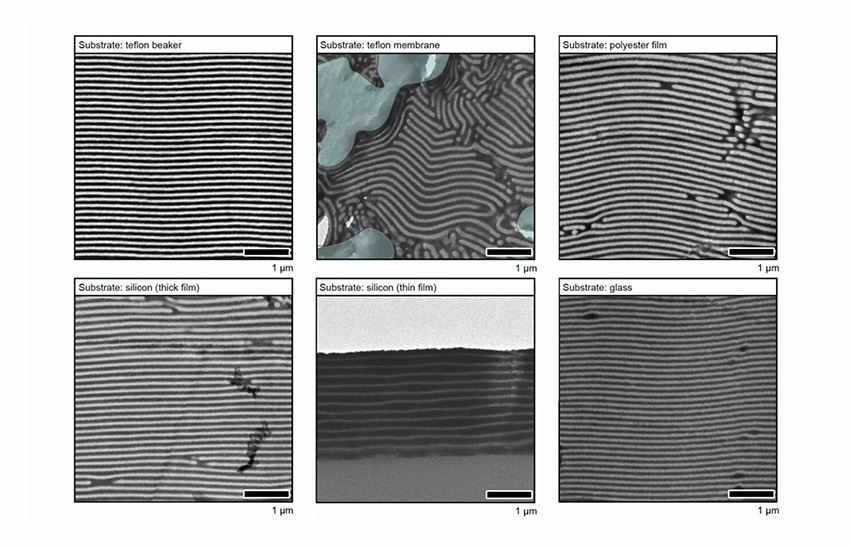Adapted from this Berkeley Lab press release

A new self-assembling nanosheet could radically accelerate the development of functional and sustainable nanomaterials for electronics, energy storage, health and safety, and more.
Developed by a team of Foundry users, the new self-assembling nanosheet could significantly extend the shelf life of consumer products. And because the new material is recyclable, it could also enable a sustainable manufacturing approach that keeps single-use packaging and electronics out of landfills. The team is the first to successfully develop a multipurpose, high-performance barrier material from self-assembling nanosheets. The breakthrough was reported recently in the journal Nature.
“Our work overcomes a longstanding hurdle in nanoscience – scaling up nanomaterial synthesis into useful materials for manufacturing and commercial applications,” said Ting Xu, the Foundry user who led the study. “It’s really exciting because this has been decades in the making.”
One challenge in harvesting nanoscience to create functional materials is that many small pieces need to come together so that the nanomaterial can grow large enough to be useful. And while stacking nanosheets is one of the simplest ways to grow nanomaterials into a product, “stacking defects” – gaps between the nanosheets – are unavoidable when working with existing nanosheets or nanoplatelets.
The new nanosheet material overcomes the problem of stacking defects by skipping the serial stacked sheet approach altogether. Instead, the team mixed blends of materials that are known to self-assemble into small particles with alternating layers of the component materials, suspended in a solvent. To design the system, the researchers used complex blends of nanoparticles, small molecules, and block copolymer-based supramolecules, all of which are commercially available.
To test the performance of the material as a barrier coating in several different applications, the researchers enlisted the help of some of the nation’s best research facilities.
During experiments at Argonne National Laboratory’s Advanced Photon Source, the researchers mapped out how each component comes together, and quantified their mobilities and the manner in which each component moves around to grow a functional material.
Based on these quantitative studies, the researchers fabricated barrier coatings by applying a dilute solution of polymers, organic small molecules, and nanoparticles to various substrates – a Teflon beaker and membrane, polyester film, thick and thin silicon films, glass, and even a prototype of a microelectronic device – and then controlling the rate of film formation.
Interested in Becoming a Foundry User?
Join our collaborative, multidisciplinary environment.
Learn more >
Transmission electron microscope experiments at the Foundry show that by the time the solvent had evaporated, a highly ordered layered structure of more than 200 stacked nanosheets with very low defect density had self-assembled on the substrates. The researchers also succeeded in making each nanosheet 100 nanometers thick with few holes and gaps, which makes the material particularly effective at preventing the passage of water vapor, volatile organic compounds, and electrons, Vargo said.
Other experiments at the Foundry showed that the material has great potential as a dielectric, an insulating “electron barrier” material commonly used in capacitors for energy storage and computing applications.
Now that they’ve successfully demonstrated how to easily synthesize a versatile functional material for various industrial applications from a single nanomaterial, the researchers plan to finetune the material’s recyclability and add color tunability (it currently comes in blue) to its repertoire.
Read the full press release

